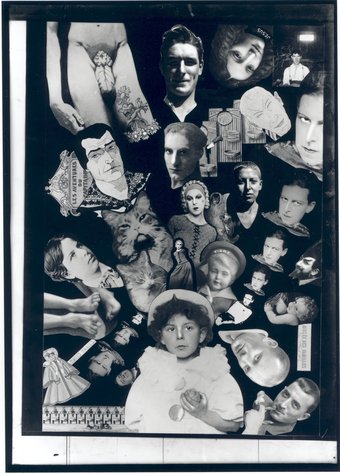Background
Photomontage is often used as a means of expressing political dissent.
It was first used as a technique by the dadaists in 1915 in their protests against the First World War. It was later adopted by the surrealists who exploited the possibilities photomontage offered by using free association to bring together widely disparate images, to reflect the workings of the unconscious mind.
In 1923 the Russian constructivist Aleksander Rodchenko began experimenting with photomontage as a way of creating striking socially engaged imagery concerned with the placement and movement of objects in space.
Other key exponents of the medium are John Heartfield, the German artist who reconstructed images from the media to protest against Germany’s Fascist regime and Peter Kennard; whose photomontages explored issues such as economic inequality, police brutality and the nuclear arms race between the 1970s and the 1990s.
Mood Board

Examples of Early – Late 20th Century Photo-montage

Raoul Hausmann’s – “The Art Critic”

Photo-montages by Claude Cahun and Marcel Moore

Identity : loss of identity
Context : insecurities with body image-social media-peer pressure-gender politics and narcissism
Jenny Saville etc in painting
Research : theory and concept
Practical : multiple exposures on acetate to show varying aspects of body image